
Blackstone Inc
NYSE:BX
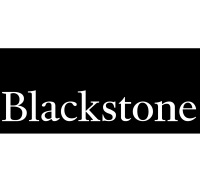
Blackstone Inc
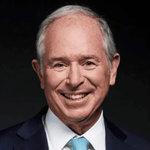
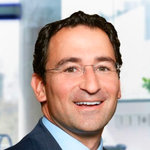

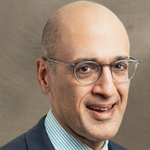
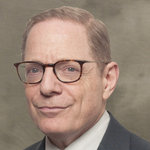
In the dynamic world of finance, Blackstone Inc. stands as a towering figure, shaping the landscape of private equity and asset management. Founded in 1985 by Stephen Schwarzman and Peter Peterson, Blackstone has grown from its modest beginnings into one of the largest and most influential alternative investment firms globally. The company's core business revolves around managing funds on behalf of large institutional investors, including pension funds, endowments, and sovereign wealth funds. With a focus on long-term value creation, Blackstone invests across a diverse array of asset classes, including private equity, real estate, infrastructure, and hedge funds. This diversification not only mitigates risk but also allows Blackstone to tap into various economic sectors, proving integral to its sustained growth and resilience.
The heart of Blackstone's business is its ability to identify undervalued assets and enterprises that possess the potential for transformation. By leveraging a deep reservoir of industry expertise and strategic insight, Blackstone acquires these assets, infuses them with operational and financial improvements, and eventually exits the investments at a profit. This value-centric approach has cemented Blackstone's reputation for fostering growth within its portfolio companies, which often results in enhanced profitability and investor returns. Furthermore, the firm's adeptness at navigating complex regulatory landscapes and maintaining robust relationships with stakeholders equips it with the agility to adapt to ever-changing market conditions. Ultimately, Blackstone's financial prowess and strategic acumen enable it to generate substantial revenues, primarily through management fees and performance-based incentives, ensuring its place at the pinnacle of the asset management industry.
Earnings Calls
In Q1, Robinhood reported a remarkable 50% year-over-year revenue increase, reaching $927 million, while its adjusted EBITDA margin improved to 51%. Engagement fueled this growth, with equity trading volume soaring 84% year-over-year. The company's strategic diversification includes launching three new product lines and an upcoming Bitstamp acquisition, expected mid-year. Robinhood maintains a robust financial outlook, guiding total operating expenses for 2025 at $2.085 to $2.185 billion. Customer engagement is high, as Gold subscribers neared 3.3 million, reflecting the company's aim to capitalize on active trading and enhance its global ecosystem.
Management

Stephen Allen Schwarzman is a prominent American businessman, investor, and philanthropist, best known as the co-founder, chairman, and CEO of The Blackstone Group, a leading global private equity and investment firm. Born on February 14, 1947, in Philadelphia, Pennsylvania, Schwarzman pursued his higher education at Yale University, where he earned a Bachelor of Arts degree in 1969. He later went on to complete his Master of Business Administration (MBA) from Harvard Business School in 1972. Schwarzman's career began at Lehman Brothers, where he worked in the mergers and acquisitions department and eventually became a managing director. In 1985, he co-founded The Blackstone Group with his former colleague Peter G. Peterson. Under his leadership, Blackstone has grown into one of the world's largest and most successful private equity firms, with diverse investments across various sectors, including real estate, hedge funds, and credit markets. In addition to his business ventures, Schwarzman is a well-known philanthropist, having donated substantial sums to educational, cultural, and social causes. Notable contributions include significant gifts to Yale University, the establishment of the Schwarzman Scholars program at Tsinghua University in Beijing, and donations to the New York Public Library. Schwarzman is also noted for his influence and involvement in public policy and his advisory roles to governmental bodies. His successful career and impact on the financial industry have made him an influential figure in global finance.

Jonathan D. Gray is the President and Chief Operating Officer of Blackstone Inc., one of the leading global investment firms. He joined Blackstone in 1992 and has been a key figure in its rise as a major force in the private equity and real estate sectors. Before assuming his current roles, Gray was instrumental in establishing Blackstone's real estate division as one of the largest real estate private equity businesses in the world, overseeing a portfolio that includes office buildings, hotels, and various other property types globally. Gray's strategic leadership and innovative investment approaches have contributed significantly to Blackstone's growth and success. A graduate of the University of Pennsylvania, he held a dual degree in English and Finance from the Wharton School. Beyond his professional achievements, he is known for his philanthropic efforts, particularly in education and healthcare. His understanding of the market and adeptness at navigating complex investment landscapes have earned him a reputation as a visionary leader in the financial industry.

Michael S. Chae is a prominent figure in the world of finance and investment, serving as the Chief Financial Officer (CFO) of Blackstone Inc., one of the leading global investment firms. He joined Blackstone in 1997 and has played a significant role in the firm’s growth and success over the years. Chae has held several important positions within Blackstone before becoming CFO, including serving as Head of Private Equity for Asia and overseeing private equity investment activities across the region. He was also previously a Senior Managing Director in the firm’s Private Equity Group, where he led numerous successful investments across various sectors. Educated at Harvard College, Chae graduated magna cum laude with a Bachelor’s degree in Social Studies. He also holds a Master of Philosophy in International Relations from Cambridge University, where he was a Marshall Scholar, and a Juris Doctor (J.D.) from Yale Law School. His strategic vision and leadership in financial management have been instrumental in advancing Blackstone’s financial strategies and operations globally. Michael Chae is recognized for his deep expertise in financial and investment strategies, his ability to navigate complex financial landscapes, and his contributions to Blackstone’s financial stability and growth.

Vikrant Sawhney is a prominent figure at Blackstone Inc., one of the world's leading investment firms. He serves as the Chief Administrative Officer and General Counsel. In this role, Sawhney is responsible for overseeing the firm's legal and regulatory matters, playing a crucial part in managing the complex legal framework within which the firm operates globally. Sawhney joined Blackstone in 2000, bringing with him a wealth of experience from his prior role as an attorney at the law firm Simpson Thacher & Bartlett LLP in their Corporate Department. Over the years at Blackstone, Sawhney has held various key positions, including serving as Senior Managing Director and Deputy General Counsel before assuming his current roles. His extensive experience and leadership have been instrumental in guiding Blackstone through numerous transactions, compliance issues, and governance matters. Known for his adept handling of intricate legal challenges and strategic issues, Sawhney is a respected voice in the investment community, contributing to Blackstone's ongoing success and reputation as a leader in private equity and alternative asset management.

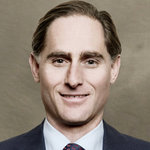
Joseph Patrick Baratta is a prominent figure in the financial industry, known for his significant contributions at Blackstone Inc., a leading global investment firm. As the Global Head of Private Equity at Blackstone, he plays a critical role in overseeing the firm’s private equity business, which involves managing diverse investments across various industries. Baratta's career at Blackstone began in 1998, and since then, he has been instrumental in driving the firm's strategic growth and investment success. He has a reputation for his keen ability to identify lucrative investment opportunities and his strong leadership skills in managing complex transactions. His work has helped Blackstone become one of the largest and most successful private equity firms globally. Before joining Blackstone, Baratta worked at Tinicum Incorporated and McCown De Leeuw & Company, a private equity firm. He holds a Bachelor of Arts degree from Georgetown University, where he graduated magna cum laude. Baratta’s expertise in finance and strategic investments has made him a respected figure in the investment community, and he continues to influence the growth and direction of Blackstone's private equity ventures.
William J. Stein is a Senior Managing Director and the Global Head of the Investment Grade Business for Blackstone Credit at Blackstone Inc. Blackstone is one of the world’s leading investment firms, known for its expertise in alternative asset management, including credit, private equity, and real estate. In his role, Mr. Stein oversees the investment strategies and operations related to investment-grade credit, leveraging his extensive background in financial markets. His work involves the management and growth of Blackstone's portfolio in this area, as well as fostering relationships with clients and stakeholders. Prior to joining Blackstone, he gained significant experience and insight in financial management and credit markets, contributing to his leadership position at the firm. His strategic vision and leadership skills play a crucial role in Blackstone's continued success in the investment sector.
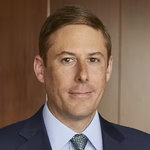

Michael B. Nash is a prominent executive at Blackstone Inc., serving as a Senior Managing Director. He is known for his leadership role in Blackstone’s real estate debt strategies. As a co-founder and chairman of Blackstone Real Estate Debt Strategies, Nash has been instrumental in the development and growth of the firm’s real estate debt business. Under his leadership, the Real Estate Debt Strategies group has achieved significant milestones and success in managing large-scale investments. Nash’s expertise in real estate finance and debt investments has contributed to Blackstone’s reputation as a leader in alternative asset management. His work focuses on sourcing, executing, and managing debt investments, adding value through strategic oversight and extensive industry knowledge. Prior to his tenure at Blackstone, Nash held significant positions in various financial services institutions, accruing decades of experience in real estate and finance, which laid a strong foundation for his role at Blackstone.
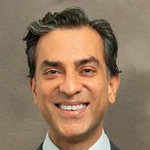
Mustafa M. Siddiqui is a Senior Managing Director at Blackstone Inc., one of the world's leading investment firms. He has played a significant role in the company's growth and strategic investment initiatives. Siddiqui leads Blackstone’s energy investing business within Blackstone’s Tactical Opportunities group, focusing on identifying and managing investment opportunities in energy markets. With a robust background in finance and investment, Siddiqui has been instrumental in directing investments across various energy sectors, including oil and gas, renewable energy, and power generation. His expertise helps drive Blackstone's strategic decisions and investment strategies within the energy landscape. Prior to joining Blackstone, Siddiqui held pivotal roles at other prestigious financial institutions, where he gained extensive experience in financial management and strategic investment planning. He holds an academic background that includes degrees from reputable universities, contributing to his well-rounded knowledge in the fields of finance and economics. His leadership and vision have been crucial in navigating the dynamic and evolving energy market, making him a respected figure in the industry.



















































 You don't have any saved screeners yet
You don't have any saved screeners yet

Thank you to everyone for joining Robinhood's Q1 2025 Earnings Call. Joining today are Chair and CEO Vlad Tenev; CFO, Jason Warnick and VP of Corporate Finance and Investor Relations, Chris Koegel. Vlad and Jason will offer opening remarks and then open the call to Q&A. [Operator Instructions]
As a reminder, today's call will contain forward-looking statements. Actual results could differ materially from our current expectations, and we may not provide updates unless legally required, Potential risk factors that could cause differences, including regulatory developments that we continue to monitor, are described in the press release we issued today, the earnings presentation and our SEC filings, all of which can be found at investors.robinhood.com.
Today's discussion will also include non-GAAP financial measures. Reconciliations to the GAAP measures we consider most directly comparable can be found in the earnings presentation.
With that, please welcome Vlad and Jason.
All right. Hey, everyone. Great to speak with you again today. Thank you for joining us. This is our second live video earnings call. I think the last one, hopefully, was informative and entertaining, so we're happy to be with you again.
If I had to sum up the quarter, what I'm most excited about is the incredible product velocity. And it was across our 3 focus areas, which if you remember, are building the #1 platform for active traders, being #1 in wallet share for the next generation, and building the #1 global financial ecosystem. So let's get into it in a little bit more detail.
When I look at our active trader offering, it just keeps getting more disruptive. We launched futures and prediction markets in Q1, and futures are accelerating nicely. So about 4.5 million contracts traded in April alone, which is more than all of Q1. So Q1, which was a strong quarter, greatly was accelerated in April. And prediction markets have done over 1 billion contracts in the last 6 months. And we've recently started to increase the breadth of the contracts we offer. So we're still very much in the early stages there.
On Robinhood Legend, which if you remember, we announced at Hood Summit late last year and launched fully a few months after that. We've been making a lot of improvements. We've upgraded speed. We've brought in new asset classes like crypto and index options. We've added support for joint accounts, more indicators and charts, and really more features being shipped on a weekly basis. So the team has just been executing incredibly, quickly on making Robin Hood legend the best platform for active traders. And all of that has been driving strong incremental volume on the Legend platform. There's actually a lot more to come. The team is already spending a lot of time preparing for the second annual active trader event, which will be holding this fall.
We're also working to serve far more of our customers' assets. So at our last City of Gold event, just this past March, we announced 3 new products: Robinhood Strategies, Robinhood Cortex, and of course, Robinhood Banking. Pretty awesome that Robinhood Strategies already has over 40,000 customers, and over $100 million in assets. So that's gone off to a very rapid start.
Robinhood Gold. So when you look at the gold credit card, we doubled the Gold cardholders to 200,000 just in the past few weeks and we love what we're seeing. We know that there's a ton of excitement about getting the credit card from customers. We see it on social media and in the questions, and we're excited to accelerate the rollout from here. So already doubled and it's going to continue.
Retirement assets, they're now up to $16 billion, which is up about 20% just from the start of the year. And we closed the acquisition of TradePMR, which was bringing over $40 billion of platform assets to Robinhood. So a lot of progress on wallet share.
And on global financial ecosystem, this is our [ tenure ] arc. We continue to make the U.K. brokerage offering better and better, and we're working on launching in Asia. So excited about that.
Bitstamp acquisition is still on track to close midyear. And we're heads down getting things ready for the crypto event, which will be in France in 2 months. So we're very excited about that. There's going to be some new things unveiled.
And wrapping it all up. As a result of the strong product velocity, we saw strong business results as well. Revenue is up 50% year-over-year. Trading volumes all up double digits year-over-year, including a record quarter for options trading. Record net deposits as well, $18 billion of net deposits in the quarter. So I'm glad to see the strategy is working. Customers are not only trading more with us, but they're entrusting us with more of their assets.
Gold subscribers nearly doubling year-over-year to $3.2 million as of the end of the quarter and actually now $3.3 million in April. And that's a 12% plus adoption rate overall. But if you look at new customers who joined Robinhood in Q1, about one in three became Gold subscribers, relatively quickly. And we look on international, that's continuing to accelerate. We are now up to over 150,000 international customers, and that's just going to keep going and going.
So we feel great about our product velocity and the business results that it's driving. I'll turn it over to you, Jason to talk through financials, and then we'll go straight to Q&A.
Okay. Thanks, Vlad. Q1 was another quarter of profitable growth as revenues grew 50% year-over-year, and EPS more than doubled. Our focus on profitable growth drove 72% incremental margins as adjusted EBITDA margin expanded by 11 points from a year ago. And over the past 12 months, revenues reached $3.3 billion, and adjusted EBITDA was $1.7 billion, as we continue to grow and diversify our business.
It's also great to see momentum continuing into the second quarter. April net deposits are around $6.5 billion. Equities trading is a 4-year high. Options are in the zone of an all-time high, and crypto trading is north of $8 billion. Also, margin balances are about $8.4 billion, which is up 2x from last year.
I am pleased with our customers' continued engagement. It's driven by a greater share of active traders who tend to stay resilient through volatility, continued market share gains and diversification into newer areas like Robinhood Legend, advisory, futures and index options. Let's take a closer look at our Q1 financials compared to a year ago.
Q1 revenues were $927 million, driven by strong growth across the board. Transaction volumes increased by double digits across all categories, including up 84% year-over-year in equities, and we saw record options volume in the quarter. Interest-earning assets and securities lending activity continued to grow, more than offsetting short-term rates, and other revenues grew as Gold subscriptions reached new highs.
We also stayed disciplined on expenses, leading to 51% adjusted EBITDA margins. In Q1, adjusted OpEx in SBC was $533 million, in the middle of our updated full year outlook range on a quarterly basis. As we previously announced, we anticipate approximately $85 million of costs from trade PMR in 2025. So we updated our full year outlook for adjusted OpEx and SBC to $2.085 billion to $2.185 billion. As a reminder, this outlook does not include costs from our anticipated acquisition of Bitstamp or provisions for credit losses.
Let's talk for a moment about how we're diversifying our business. You've heard me say that we have 9 businesses that each generate over $100 million in annualized revenues, nearly double the number we had just a couple of years ago. And I'm excited to say we have many more that are quickly scaling.
For example, we've recently launched 3 new products. Futures, index options and prediction markets, where the ARR for each of them individually is already around $20 million. And with the addition of TradePMR, we've added a business that has a $50 million run rate and a nice track record for growth. And there are several more businesses that we recently announced and expect to begin contributing later this year, including Robinhood Strategies, Robinhood Banking and our acquisition of Bitstamp in the middle of the year. So we're incredibly excited about all these new businesses, and I like our opportunity to build many of them into additional $100 million revenue businesses in the coming years.
I also want to give an update on our share repurchase program. You'll recall we began executing on our $1 billion share repurchase plan in Q3 last year, with target completion over 2 to 3 years. Since then, we've moved faster and have deployed over $650 million at an average price of $33 per share. This includes over $300 million of buybacks in Q1, which more than offset share issuance for TradePMR. Given our strong performance and positive outlook, our board has increased the authorization by $500 million, taking the program up to a total of $1.5 billion. We expect to deploy the remaining $800 million plus over roughly the next 2 years, but we're keeping flexibility to accelerate if market conditions warrant.
So we feel great about our business and financial results and remain focused on driving another year of profitable growth in 2025. We're continuing to work to maximize earnings per share and free cash flow per share over time.
With that, Chris, let's move to Q&A.
All right. Thank you, Jason. For the Q&A session, we'll start by answering the top few questions from [ say ] technologies ranked by the number of votes. We passed over questions that we've already addressed on this call, or in prior quarters, and group together questions that share a common theme. After the say questions, we'll turn to live questions from our analysts.
So let's kick it off with our first question from Say. Patrick asks what is Robinhood doing to accelerate credit cards and checking accounts to their gold members?
Thanks for the questions. I'll start with the Gold Card and maybe turn it over to Vlad for banking. As I've mentioned, it's really important for us to study customer behavior as we roll out the card. We've been doing that and have increased the number of cardholders from 100,000 to over 200,000 just in Q1.
So far, what we're seeing in terms of customer behavior is in line with our expectations, so we feel good. And we plan to continue increasing the number of cardholders throughout the year. But along the way, we're going to continue to be measured in the near term. Vlad?
Thanks, Jason. Yes. On the banking side, so we announced at Velocity of Gold event back in March Robinhood Banking. And the philosophy behind this product is that we want to build a compelling banking experience for the top of market. So if you're someone who's a high net worth individual with more assets, we wanted to provide a digital banking experience where you would feel like you're not making compromises relative to your brick-and-mortar bank. And I don't think any digital bank has taken that approach.
So we're extremely excited. We've been testing the product internally. It's looking really good. I think you're going to like it. And at the event, we announced rolling out to the public in Q3, and we feel good about that date. So stay tuned. The team has been working incredibly hard.
Awesome. All right. The next question is from Nico who asks, when will users be able to invest in private companies such as SpaceX?
Yes. So this is actually one of our top policy priorities. We believe that it's actually quite crazy that customers can't invest in private companies, given that private companies -- companies are staying private longer. The days of Microsoft going public at a multi-hundred million market cap, or Apple at relatively low market caps, and you being able to take advantage of a lot of the appreciation in public markets, they are fewer and far between.
Now you have companies like OpenAI and SpaceX still private and in valuations of hundreds of billions. So those gains are accruing to a smaller and smaller group of insiders. We have the technology to do this. And in fact, I wrote in an op-ed for the Washington Post that tokenizing private equities is a huge unlock both for individuals, but also for these companies, and for crypto technology, which can actually solve a lot of the problems in secondary market transactions that have been tried thus far.
What's needed is comprehensive security legislation in the U.S. and also for us to rethink the accredited investor rules, which shut out north of 80% of the public currently. So both of those, we're making progress on. We're in active discussions. There's definitely a willingness from the administration and lawmakers to engage in these issues. So stay tuned, but we believe we're going to make progress here.
Great. And then the last question is from Paul who asks, when will Robinhood offer 401(k) plans to businesses?
Yes. Thanks, Paul. Our [ 10-year arc ] or long-term arc is to build the #1 global financial ecosystem. And what that means is expanding our business from retail only, which it pretty much is now to also serving businesses and institutions, and also expanding from primarily U.S. to being a full global platform, serving customers everywhere. Regardless of whether they're individual retail businesses or institutions.
And so when we look at that B2B opportunity, we think businesses and institutions have fundamentally similar needs in many ways to retail. The things that we're building, the innovations we're building for retail, things like 24-hour trading, rock bottom margin rates also appeal to institutions and businesses. And there are so many opportunities. 401(k) administration for businesses is one. You also look at things like employee stock plan administration for public companies. You look at institutional prime brokerage and of course, serving registered investment advisers, which we're now getting into through TradePMR. And we think that's an enormous opportunity to serve businesses.
If we look at registered investment advisers, it's a business that has an additional layer of compounding. So not only are we taking advantage of the great wealth transfer, where young people are going to be making more and more money over time. We're getting more customers. But as we get more advisers that's a third layer of asset growth. So for the near term, we're working really hard to integrate the TradePMR team and technology, build a great experience, serving registered investment advisers. We want to make sure we stay super focused and we don't take on too much.
So that's been our B2B focus for the near term. But over the long term, we do think 401(k) is a sizable opportunity that we'd be excited to tackle alongside all of the other things in our [ 10-year ] arc.
Great. All right. Thank you, Vlad. That concludes our shareholder questions from Say Technologies. Now we will open the call to Q&A. [Operator Instructions]
The first question comes from Chris Allen at Citi.
The health of the retail customer is a big focus in the current environment. I was wondering if you could peel back or provide some additional color on April metrics you provided were very solid. Curious if margin balances kind of improved towards the back half of the month, whether you've seen net new account openings and the strong deposit numbers, are those coming from existing customers or new customers [ too ]?
Chris it's Jason. I'll take it, and Vlad, feel free to add in.
So we saw incredibly strong engagement across the board, not just in Q1, but it continued into April as we said. And it was it was throughout the month of April. So I wouldn't say it was front loaded or back loaded. It was really a strong month in total.
We're seeing strong additions, as Vlad alluded to, to Robinhood Gold and the strength in net deposits is pretty diverse. And what's different about us today than perhaps a few years ago is there's just a lot more options for customers to place their assets. Whether it's the growth in retirement, the nascent growth in strategies, certainly brokerage, we're also seeing it go into crypto. So I'd say that there's a pretty broad-based strength of retail engagement that we're seeing and all signs are positive throughout the month of April.
Yes. The only thing I'd add to that is, unlike where the business was back in 2022, where we were predominantly focused on novice investors, the new focus on being the best platform for active traders, has made us more resilient in times like these because we used to just not have a lot of mechanisms for customers that were more sophisticated that wanted to trade sideways or declining markets. They just couldn't engage in that super easily on Robinhood.
But just recently, we've launched futures. And as we shared, futures had a very, very significant growth in April with over 4.5 million contracts traded -- outright contracts. We've rolled out an amazing experience for multi-leg options trading on mobile, the side-by-side chain, which will make it easier for advanced traders to engage in the multi-leg strategies. And Robinhood Legend continues to grow and get better.
So now we have multiple mechanisms for these active traders to engage no matter what the market environment is in. So even though we're diversifying the business with 9 business lines of over $100 million, and we're getting less reliant upon trading in the revenue mix, even within trading, it's becoming more resilient. So I think we're very excited about that, and there's still more to come.
The next question is from Dan Dolev from Mizuho.
Great quarter as always, very impressive. Really quick looks like Robinhood Gold is doing really, really well. And hopefully, I didn't miss and it was already addressed. But this seems to be growing way faster than we had expected. Like what should we be thinking about in terms of like the trajectory of the growth here because it seems to be -- I think you had $550,000 quarter-over-quarter increase this quarter?
So maybe just some color on like how big it could be and just the velocity there, which seems to be very impressive.
Yes. Maybe I'll share some higher-level thoughts, Jason, feel free to add in.
Yes, our aspiration, I already think Robinhood Gold is the best deal in financial services. But I think the aspiration is to actually make it on par with the best membership loyalty programs out there. So we're not just looking at financial services as a benchmark. And in reality, these types of products are, until we came along, relatively unique in our industry. But we're looking at things like the Costco membership. Amazon Prime is an inspiration. And we're really sort of like students of this. And I think that the improvements that we've made in day 1 and Q1 attach rate, which have been tremendous are just the beginning.
I think that when you keep hearing how crazy high of a value Gold is and why we don't raise the price, not just from analysts, but also customers, I think we feel very good we're on the right track in -- credit card is continuing to roll out. That's in the relatively early stages. Banking, which is going to be a Gold only product, that's looking really, really good. So as far as we can see, the Gold road map is looking very solid.
The next question is from Devin Ryan at Citizens.
I want to ask a question on crypto specifically. You've seen a little bit of a pullback, a record fourth quarter, and we know that was kind of particularly elevated. But would love to just get a little bit of color from what you're seeing or hearing from customers there, because it's still very active. And I know you're going to have the update in June. So I don't want to completely front run it.
But at the same time, I'm curious kind of the level of urgency to do more as this industry is getting [ locked ]. We're hearing more about kind of a race on stable coins. And so I'd just love to kind of get a sense of how hard you guys are pushing there? And then also just the engagement from customers just given that we're off the highs a little bit.
Yes, yes. So I mean crypto had an awesome quarter. We had about $260 million in revenue for the quarter, which was the second highest quarter in recent years. Last quarter, obviously, was higher than that. But it's going to go up and down in terms of trading volumes. But what we like to look at is market share. And if industry volumes are going down, but market share is going up for Robinhood, and we're continuing to unlock and add more selection and add more products. We feel like we're doing very, very well.
So the team has been cranking. There have been a slew of improvements both for traders and coming down the pike but more selection, smart exchange routing, and the team has been executing a lot and there's so much to do. So we're excited for the June event. But I'd also tell you we're diversifying the business outside of the crypto business, which will make us less reliant on crypto transaction volumes. But also within crypto, there's going to be diversification over time. So crypto itself will diversify and be less reliant on transaction volumes in the future.
The next question is from Roy at Crossroads.
I really enjoyed getting that early look at Robinhood Strategies and seeing what that platform is about and what you guys have been building. I'm curious if you could give us any early read on that product as far as how it's being approached by customers, how many are actually looking at that?
Yes. Yes, absolutely. So we shared earlier over 40,000 customers already, over $100 million in assets on Strategies. I'm sure you've seen some of the engagement on social customers sharing their portfolios and talking about how, despite sort of like the volatility of the times we're in. Product's been holding up very, very well. So it's continuing to grow. We're adding more and more features based on demand, but early read has been tremendously positive from the customers that have it.
The next question is from Patrick Moly at Piper.
So I wanted to touch on the futures offering again. You mentioned that you've seen 4.5 million contracts traded in April. So it sounds like that's picking up pretty nicely. So just curious where that borrowing is coming from? Is that existing customers? Are you finding that you're winning customers from other brokerage platforms there?
And then any specific commentary that you can give on whether there are specific products or specific asset classes that you're finding your customers are migrating to?
Yes, yes. So I think it's a little bit early to give you sort of like the full read, but we're seeing good signs of these volumes being incremental, actually. And the reason we can tell is we look at a lot of our futures traders. They also are trading equities and other assets. And you're actually seeing the power of having multiple assets in one platform shine through there.
And really, the thing that futures allows customers to do, easy ability to take short positions, which we still don't have equity shorting. While that's coming, it's sort of an outlet for that type of advanced systematic trading. We have the latter. And we also have those markets trading around the clock. So it's really opening up new behaviors and new styles of trading for our active traders. So that's, I think, why it's seen such good adoption, plus the product experience that the team -- the futures team has built. They've done a really nice job, particularly on the mobile ladder.
And there's more to do. Futures on Legend, for example, and making it available also to outside the U.S. as we continue to expand there.
The next question is from Craig Siegenthaler at Bank of America.
So my question is on Cortex. Are you going to charge for this product? Or is it offered -- or will be offered for free to your Gold subscribers? And is the launch planned towards the end of the year, 4Q '25?
For Cortex?
Yes.
Yes. We'd like to -- I think we'd like to get it a little bit before then. Teams have been working hard to get that out. And Cortex is that what you saw announced in the velocity of Gold events just the beginning. So we announced Cortex for stock digest that will help customers answer the question of what's going on with the stock also trade builder, which will help customers execute on an options trading strategy given a viewpoint and a selection of a particular stock. It will be for Gold subscribers. So right now, no plans to charge additional fee. We want to give this technology to our gold customers. And you should see it actually permeating the entire Robinhood experience.
So this is just the start, but we're already thinking about how to integrate it more deeply into flows for active traders across different platforms. And also, we're continuing to make progress improving the operations of the company and also the customer service through AI. So while maybe that's less overt, it's incredibly powerful because it gives customers resolution, really effective resolution whenever they run into issues.
The next question is from James Yaro at Goldman Sachs.
So wanted to ask a longer-term crypto one for you. We've now seen all 3 U.S. banking regulators shift their posture to allow them to participate in the crypto ecosystem. What role do you expect U.S. banks to play across both and wealth versus institutional crypto? And what does this mean for competition and pricing in the U.S. crypto markets?
Yes. I would just put out there. I like our positioning. It's always hard to speculate on what competitors may or may not do before they have products in market. And we're focused on driving innovation here. So obviously, we've done well on the trading side.
We think crypto is interesting as a foundational technology that could actually improve a wide variety of financial services, not just spot crypto trading. So we think we're just in the early innings of having this technology permeate the financial system. And we're excited to see what not just we bring to market, but what others can do partnering with us and just independently as well.
I think as more competitors enter the market, it makes crypto more mainstream, which makes the market bigger. And I think we've been demonstrating our ability to take market share. So I really like our competitive position.
The next question is from [ Amit ] at [indiscernible] Investing.
Congrats on a great quarter. My question here is on the promotion you guys ran for the 2% match in March. Jason, I know you said you've loved the unit economics on these matches. Can you give us a little bit of insight on the types of customers you brought over in March? And if you think the 2% match is sustainable to continue bringing over more of the wealthier clients?
You bet. So first of all, incredible engagement by customers, record level of net deposits. The promotions were not the majority of that. In fact, they were, in Q1, less than 15%. Customers love it. We love it. And you're right, [ Amit ]. I love the economics of it. The payback periods are really attractive, consistently below across all of our promotions below the clawback periods on that.
In terms of the kinds of customers that we're getting, we're getting large customers. The average customer transfer per user was $90,000 overall. So we're getting large customers. And then what's really interesting is for taxable accounts, because we had taxable and nontaxable promotions. For taxable accounts, it was double that. So over $180,000 average [ ACAT ] transfer in for the promotion. So we really love these promotions. We like the customers that we're getting, and they tend to have larger balances.
The next question is from Matt O'Neil at FT Partners.
I joined a little bit late, so apologies if this has already been discussed. But just curious around crypto pricing. It seems like things are moving in the direction that they have been for a number of quarters now.
Maybe you could just discuss kind of where that stands as far as the experimentation that continues, as well as I believe there's some further experimentation going on with volume-based pricing?
Yes, you want to hit that, Jason?
Sure. I mean we're continuing to experiment. We've been seeing the take rates come up sequentially for several quarters now. What I'd say is that when we look at take rates for crypto for the month of April, it's in a similar zone to where we were at in Q1.
I do think the big opportunity for us on experimenting is tiered pricing. While Robinhood has really attractive pricing on average, I think that there's a big opportunity for us for the highest volume traders of crypto to get a better price for Robinhood. And that's what we're really experimenting with. And we like what we're seeing so far, but we're still pretty early in those experiments.
The next question is from Brian Bedell at Deutsche Bank.
Maybe just going back to the net deposits in March and the continued traction in April on the actual active trader mix within those net deposits.
So you talked about the 18,000 average balance on the taxable side. Either Jason or Vlad, can you talk about what you're seeing from coming into the complex and the usage on Legend? I think the last time you quoted that it was about a $50 million run rate. I don't know if there's an update to that. And maybe just talk about the plans for Legend as we roll out through the year?
Maybe I'll start Vlad and then you can kind of fill in.
So last quarter, we said $50 million ARR. We didn't update it this quarter. We'll just update that periodically. But I can tell you that we've seen strong growth sequentially in volumes through Legend as active traders continue to adopt and engage with the product and as we continue to Legend.
One thing that's really nice is that when we look at incrementality, the vast majority of the volumes that are coming through Legend are incremental. So that's super encouraging.
Yes. And in terms of road map to Legend throughout the year rounding out the feature set. So futures on Legend is off requested. Customers want to see the latter, which they love on mobile, on Legend as well, and then continuing to refine and improve the active trader experience. And also the live streamer experience. So we've added a bunch of new widgets, snapshot to make live streaming on legend better and better. So the velocity of this team continues to be really, really strong. And we've got more in-store even prior to the active trader event in the latter half of the year.
The next question is from Ben Budish at Barclays.
I was wondering if you could -- Jason, could you talk a little bit more about what you're seeing on the credit side? I'm particularly curious about your expectations for credit loss provisioning for the year. I know it's a hard one to model and probably a hard one to guide to. I think in the last quarter, you said it should run maybe like around like the $20 million range. It came in a little bit higher than that, which I'm sure is somewhat in response to the changing macro [indiscernible].
But how are you thinking about -- how should we be thinking about that line? And any other color you can provide in terms of credit behavior? Are people using this card as -- are they accruing balances? Are they maximizing for points? What sort of activity are you seeing? How you think about sort of managing credit risk in this environment?
Yes, sure. So first of all, we really like what we're seeing from our customers. Delinquency rates, write-offs are all very, very low and in line with our expectations. And when we look at broader industry data, there's nothing that we're seeing that's particularly concerning. That said, we're continuing to have pretty tight underwriting standards so that we build a book of business that can be resilient regardless of the backdrop.
In terms of the provision for credit losses this quarter, I'd actually point you to on the brokerage side, not on the credit card side. We had a step-up in some brokerage-related losses, not related to margin book, but more kind of fraud-related teams all over it, not something I'm worried about. But in terms of the Gold Card we like what we're seeing in terms of the customer behavior.
We are seeing a nice ramp in the revolve rates, which is in line with our expectations. And customers are engaging with the card in a variety of ways, using it for all types of purchases, and they're certainly enjoying the 3% rewards on the card. So, so far so good. We continue to hold the path. We added 100,000 cardholders in Q1 and we intend to continue to add cardholders throughout the year.
In terms of the expectations for provision, I would expect it to just increase gradually through the year as we roll out more cards.
Yes, and product experience for the credit card app keeps getting better and better, and it's going to continue to improve, particularly when it becomes the banking app. So we're excited for that in the coming months.
The next question is from Alex Markgraff at KeyBanc.
Jason, maybe one for you on just sort of taking all of these new products together and understanding that there might be some yield differential, if you will, or an advisory and things like that.
Could you just sort of speak to contribution margin and how you manage that line as you launch and scale new products at different price points, different monetization levels?
Yes, absolutely. Every business that we go into has different economic characteristics. Some might have lower return on assets, some might be more monetized just directly from trading activity. What I would tell you is that what we're trying to optimize for over time is just increasing earnings per share and free cash flow per share. And I think as a technology company, we're incredibly well positioned to serve a variety of different businesses with a variety of different economic characteristics at a really low incremental cost, and that's leading to pretty high incremental margins.
You can see this kind of in our overall business as we're growing revenue much, much faster than our bottom line costs. So we're seeing really nice leverage and 100% increase year-over-year in earnings per share. So we feel really good about just continuing to stay focused on the customer, our 3 priorities of #1 in active traders, #1 in wallet share for the next generation and #1 in global financial ecosystem. And we think if we stay focused on the customer and keep our primary financial lens on growth of earnings per share, we're heading in the right direction.
The next question is from John Todaro at Needham.
It's on prediction markets. So [ $1 billion ] traded over the last 6 months, does that basically leave us with [ $500 million or a $1 million ] or so that are out -- that was outside the November election. And then any sense how much was kind of March Madness or sports-related versus other events?
Yes, that's right. I'll be happy to feel that one. So out of the [ $1 billion ] contracts traded, yes, just less than half of that has been sports, and that's March Madness, but we also had the masters and now there's NHL and NBA contracts as well. So the plan is still continue making the product better. Now that we have so many contracts, discoverability and organizations, something that the team is looking at. And we think that this is an incredibly powerful nascent asset class, and you should see more and more contracts and a wide variety of contracts over time. So we love what we're seeing and it's so early that the potential of this is vast.
The next question is from [ Tenner ] at Future Investing.
Great quarter. Can you hear me?
Yes, we can hear you.
Okay. Perfect. Within the new verticals like you guys have with the end contracts and credit cards, are you guys attracting new users onto the platform without simply going to brokerage first? Any insights on that?
And if they're upgrading to Gold or eventually cross-selling to other products would be great.
Yes, absolutely. It's a mix. I think what you're starting -- what you typically see to begin with is we like to test it among existing users, particularly the most active users tend to be yes, the earliest to adopt, and we have a large installed base of north of 25 million funded accounts, which I think has been a huge differentiator for us relative to other businesses launching products. So we have lots of channels where customers can discover products, different cross-sell services in product and also marketing activities and referral activities.
So depending on the product, we use one or multiple of those. And credit card is a little bit unique because that one top of funnel has been relatively easy. As you know, there's about [ 3 million ] on the wait list, and we're rolling it out rapidly, but our thesis that by offering a great product experience with great economics, we wouldn't have to pay the gigantic cost of customer acquisition that the incumbents have gotten used to paying seems to be bearing out. So we're excited about that.
I would just add that Robinhood Gold does play a pretty important part in this. When you become a Robinhood Gold customer you bring in more balances, you deposit at a higher rate. And importantly, on the cross-sell point, you're much more likely to adopt more products. And so take retirement accounts as an example, like 4x more likely as a Gold customer versus an average customer, to have a retirement account. And so I think they have 5x the assets.
And so being a Gold customer is kind of central to our strategy for cross-sell. And then as we continue to offer new and interesting products, our customers are discovering them at a faster rate.
The next question is from Brett Knoblauch at Cantor.
This is Thomas [indiscernible] on for Brett Knoblauch. Congrats on another great quarter. I just wanted to touch on the launch of the [indiscernible] adding for crypto trades. I know we've touched a little bit on crypto pricing here, but I just wanted to see how adoption has been amongst traders for the mark exchange routing? And how we should think about the impact on your blended [indiscernible] over the next few quarters as adoption for this new product to [ grow ]?
Yes. Yes. It's still early. It's in the relatively early stages of rolling out and we're experimenting with it. So far, results look good, in particular, for the active traders that are engaging with the order book directly through tools like Legend or even on mobile, they want to be able to interact with the order book and see the price. And we -- it also gives us the ability, as Jason mentioned earlier, to give preferential pricing to customers that trade more.
So overall philosophy is as you bring more and more of your activity to Robinhood, whether that means crypto trading activity, if you're an active trader, or just assets, the experience should get even better for you. So that's kind of the long-term goal. The more of your activity, the more of your assets you bring to Robinhood and the longer you are with us, the better the experience gets. And I don't think that's actually universal, most other financial services products are the opposite that kind of get worse for you, the more money you have.
So yes, stay tuned, but that's kind of where crypto is headed. I think in the future, there will be more customization and pricing depending on your activity and sort of your engagement with the overall Robinhood platform.
And I don't -- I would just add that I don't think that tiered pricing necessarily means a lower blended rate. I think the big opportunity is bringing in volumes, trading volumes that are today not coming to Robinhood. And so we'll have to see how that plays out. As we mentioned, it's small today and April take rates are in line with what we saw in Q1.
The next question is from Edward Engel at Compass Point.
Most of my questions have been asked already, but I just wanted to touch on TradePMR. You talked about $85 million of incremental costs for this year. I guess [indiscernible] year 2026, what does kind of that core run rate cost base looks like? Is there any opportunities for savings there?
Yes. I would just say that in that $85 million is including deal-related costs. So we have an opportunity to take that number down, particularly by the -- by next quarter even as we move forward.
The next question is from Kyle Voigt at KBW.
Maybe another question on crypto, but on the regulatory side. Last quarter, you noted that more regulatory clarity was needed to offer crypto staking. I just wanted to get an update on that. And really wondering whether you'd be satisfied with guidance from the SEC? Or do you need to see a more comprehensive crypto market infrastructure bill or regulatory framework path to get comfort there?
And then in terms of the comprehensive kind of crypto bill, was there anything proposed in the prior [ FIT21 ] digital asset bill that would cause or necessitate any material changes to your current operating model for crypto more broadly?
Yes. We don't see anything that's concerning with regards to the crypto operating model. But there are opportunities. I think the big opportunity is clarity on listing crypto asset securities and actually not just for brokers to be able to list these assets, but also for issuers to issue these assets. I think that will unlock a ton of economic value for the crypto industry in the U.S. So that's been kind of our primary policy objective in Washington when it comes to crypto.
I think it's been good in the sense like not having a regulation by enforcement posture has been a boon to the industry. But now we have an opportunity to go further and make this technology useful to everyday people and to institutions in a real big way. So that's kind of what we're working towards in Washington.
The next question is from Evan at Stock Market News.
My question -- congrats to the entire team on a fantastic quarter. I want to talk a little bit more about you guys are adding a bunch of new products and features and business lines. I wanted to ask a little bit about time spent on the app and users minutes. And if you guys have seen any changes and if that's something you guys are watching and optimizing for?
Yes. Yes, great question. We've traditionally done very, very well on those types of metrics. I mean people find the Robinhood app very engaging, despite the fact that we don't spend a ton of time or efforts driving that. The efforts are all on making great products, making sure that customers retain really well and build a great product experience. And more recently, driving Gold subscription, the retention of Gold subscribers. So really, thus far, the focus has been on making it easy for customers to get in, making it easy for them to adopt the Gold subscription. And once they have Gold sort of like facilitating them seeing the value across all of the products that are that are on the platform. And then making sure we uphold the commitment to having a great product experience throughout the journey.
Not to say that there aren't opportunities, and we're actually investing more in building out our related teams there on the growth in the marketing side. But yes, thus far, it's been focused on making sure the products are really, really high quality and customers are experiencing tremendous value from using that, and Robinhood Gold in particular.
One of the things I'm excited about is the potential for Cortex to make the app even that much more engaging throughout a day. So -- but looking forward to seeing the team execute on that one.
The next question is from Ken Worthington at JPMorgan.
I'd love to get some better insights into sort of the event and prediction market business. Are these participants more like your equity option or crypto customers today? What sort of penetration would you expect in the prediction markets of these customers over time?
And then do prediction market customers have sort of higher or lower velocity than the other segments of your business? Are these like super active? Or are they more or less active? Like where do they fit into the continuum of your customers?
Yes. I think the great thing about this business -- about the prediction markets business is that appeals to a broad range of customers, and we actually see very, very different behaviors, even within prediction markets when you talk about different contracts.
So for example, the group of customers that engages with the economic prediction markets, is not the same group of customers that engage with the [indiscernible] for instance. And so many of young people who are our customer base, love sports and love following news and current events. So actually, what you see is like pretty wide dispersion.
Yes, it's not like other assets where if you're an options trader, a number of options traders are coming and primarily engaging with that. You see these customers engaging in a wide spectrum of assets and sort of like trading activity quite broad and varied among the rest of our products.
The next question is from Steven Chubak at Wolfe.
Jason, you typically provide near-term guidance on NII. And I was hoping you could speak to where you expect NII to lend in 2Q based on spot or current balances? And with 4 cuts reflected in the forward curve, it might be helpful if you could provide an updated sensitivity to interest rate cuts.
Yes. Thank you, Steven. So we didn't provide specific guidance for NII. What I'd tell you is that when we look at the effect, again, just isolating for a 25 basis point cut, the impact would be on a stand-alone basis, about $50 million as a headwind.
Now when we look at over the last year, the rates have come down quite a bit, yet we have grown our interest-earning assets at a pace that has outpaced the effect of dropping rates. And so it's a little misleading to just hold everything constant and say $50 million. So we're continuing to gather assets from customers, and we've seen a really nice growth in interest-earning assets.
And then I know you've heard me say many times, we also believe that we've got a really nice natural hedge between interest rates and trading. So as rates come down, there's an expectation that we have that trading would go up and provide a nice offset to any impact there.
The next question is from Mike Cypress at Morgan Stanley.
Just a question on [ 24/5 ] markets. I was hoping you could talk about the traction that you're seeing from clients in your overnight sessions, how that's contributing today? And talk about some of the steps that you're taking to [indiscernible] greater customer uptake of this?
And if you look out 3 to 5 years, what does success look like here for your [ 24/5 ] markets? What portion of equities options line do you think this could represent for Robinhood?
Yes. I mean, market 24-hour market is continuing to grow. Obviously, you see bursts of engagement when macro events are happening after hours are on weekends. And there, you've just -- you see it in a 24-hour market first. And I think you're seeing it become a standard. So probably 5 years from now, you're not really going to be talking about a 24-hour market and sort of like core market. It will become table stakes for any platform servicing active traders to offer this type of feature and to kind of follow us in there. And then you're going to see the exchanges offered as well. So it will be an anomaly for something to not be available on 24-hour market.
I think it becomes even more imperative when you start looking at international expansion. As we get into Europe and Asia where there's less and less overlap with U.S. East Coast working hours. That's just going to be another tailwind for increased volumes and adoption. But I think the long-term trend is 24/7 for every tradable asset.
And then the last question is a follow-up from James Yaro at Goldman Sachs.
I just want to touch on Bitstamp. When the deal is closed, could you just help us think about what that acquisition could mean for the way you route your crypto orders in terms of internalization as well as the crypto [indiscernible] rate?
And obviously recognizing the deal had institutional volumes, so that could pressure the blended take rate if you don't break that out. But -- so maybe if you could just isolate the impact on your retail crypto take rate?
Yes, we're very excited about Bitstamp. The oldest and longest running crypto exchange out there. So that makes Robinhood the oldest and longest continuously running crypto exchange, which is very exciting. Still middle of the year for close.
I don't want to front run any specific announcements on what we're going to do. But what I'll tell you is institutional is a big opportunity for us. We're obviously not really in that space yet, but we see a lot of opportunity. And also international, Bitstamp has a global presence. Cryptos increasingly global. We're going to do more and more there.
And in terms of customer execution quality, at the end of the day, the goal is to give customers choice and to provide a great execution experience, and Bitstamp certainly will play a role in that. We think it just gives us another lever to give our active traders more ways to execute their orders.
Okay. Well, that concludes the Q&A portion of our call. Before we end the call, Vlad, I'll turn it back to you for any closing comments.
Yes. I mean I just want to say thank you, guys, for joining us again. Second live video earnings call. I think we're going to continue to do it. I think they're going to get better and better.
But really, we've got a lot of work to do. It's going to be a busy year. The road map is incredibly full. So thank you for being on this journey with us and for listening, and to the analysts and investors, retail and institutional who continue to engage with the company. So we're by no means slowing down. It's going to be a busy year for us. and looking forward to seeing many of you at the France crypto event.